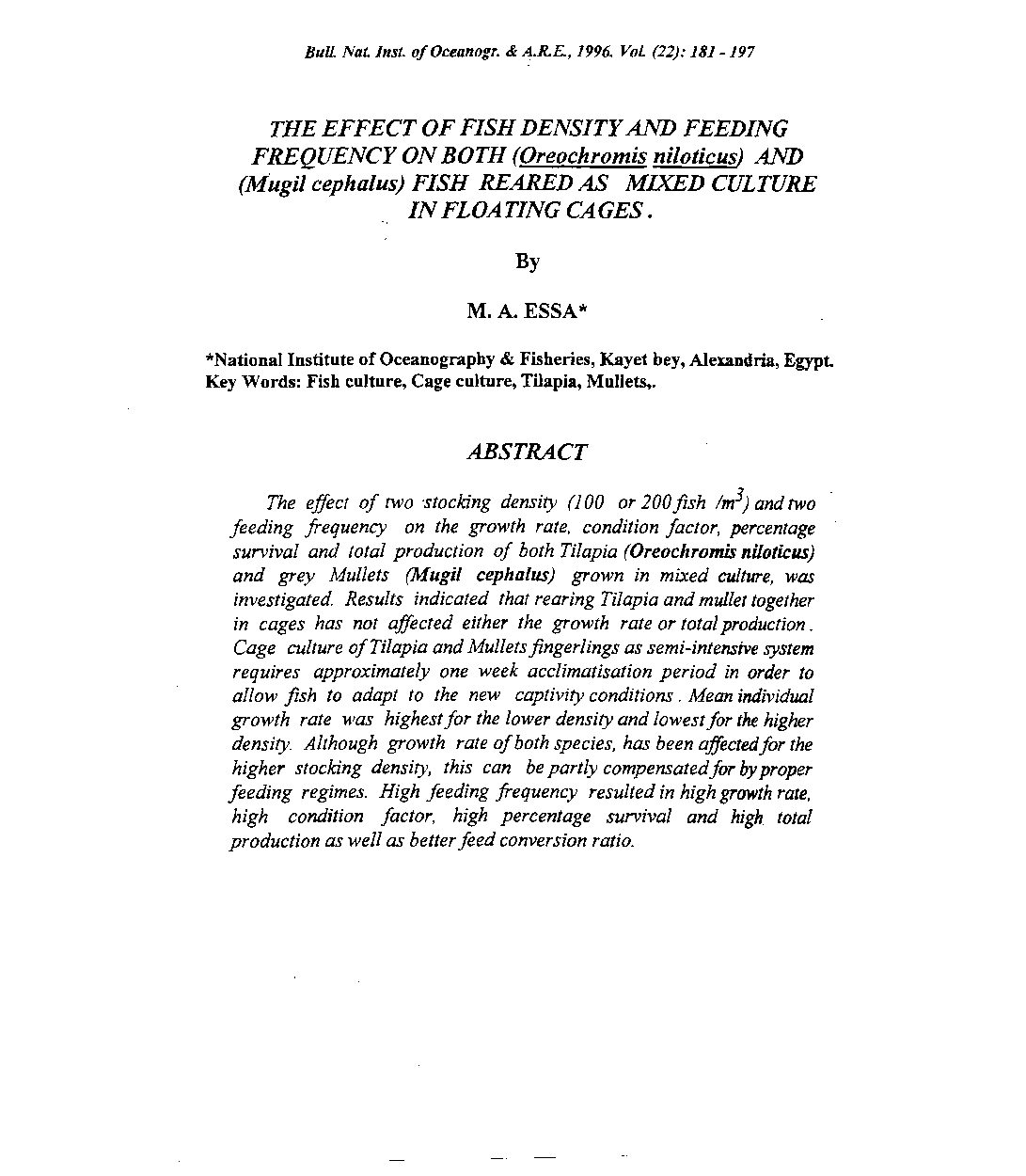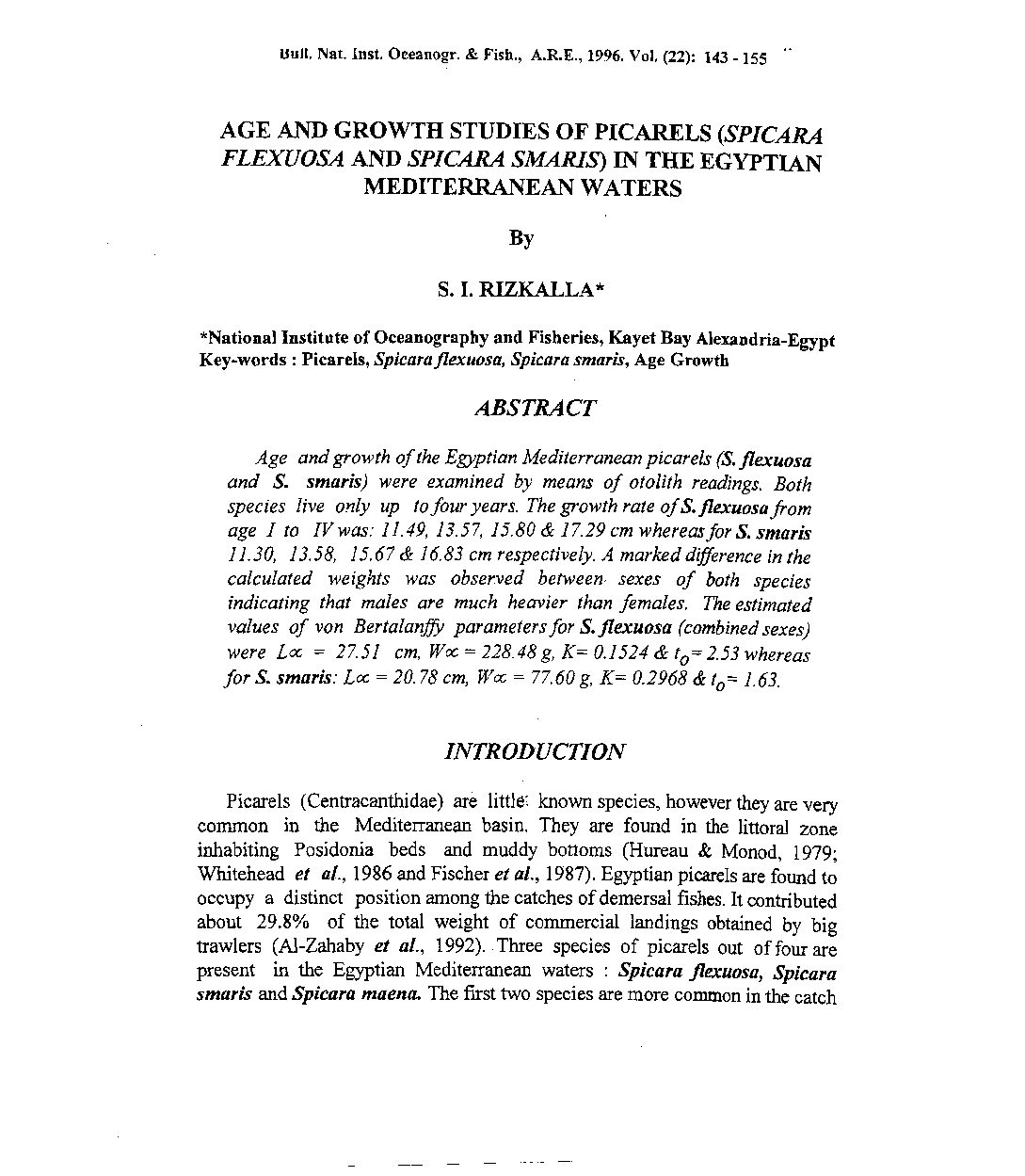Categories
vol-22THE EFFECT OF FISH DENSITYAND FEEDING
FREQUENCY ON BOTH (Oreochromis niloticus) AND
(Mugil cephalus) FISH REARED AS MIXED CULTURE
IN FLOATING CAGES.
By
M. A. ESSA*
*NationaI Institute of Oceanography & Fisheries, Kayet bey, Alexandria, Egypt
Key Words: Fish culture, Cage culture, Tilapia, Mullets,.
ABSTRACT
The effect of two ‘Stocking density (l00 or 200fish 1m3) and two
feeding frequency on the growth rate, condition factor, percentage
survival and total production of both Tilapia (Oreochromis niloticus)
and grey Mullets (MugU cephalus) grown in mixed culture, was
investigated. Results indicated that rearing Tilapia and mullet together
in cages has not affected either the growth rate or total production.
Cage culture ofTilapia and Mulletsfingerlings as semi-intensive system
requires approximately one week acclimatisation period in order to
allow fish to adapt to the new captivity conditions. Mean individual
growth rate was highestfor the lower density and lowestfor the higher
density. Although growth rate ofboth species, has been affectedfor the
higher stocking density, this can be partly compensatedfor by proper
feeding regimes. High feeding frequency resulted in high growth rate,
high condition factor, high percentage survival and high. total
production as well as betterfeed conversion ratio.







